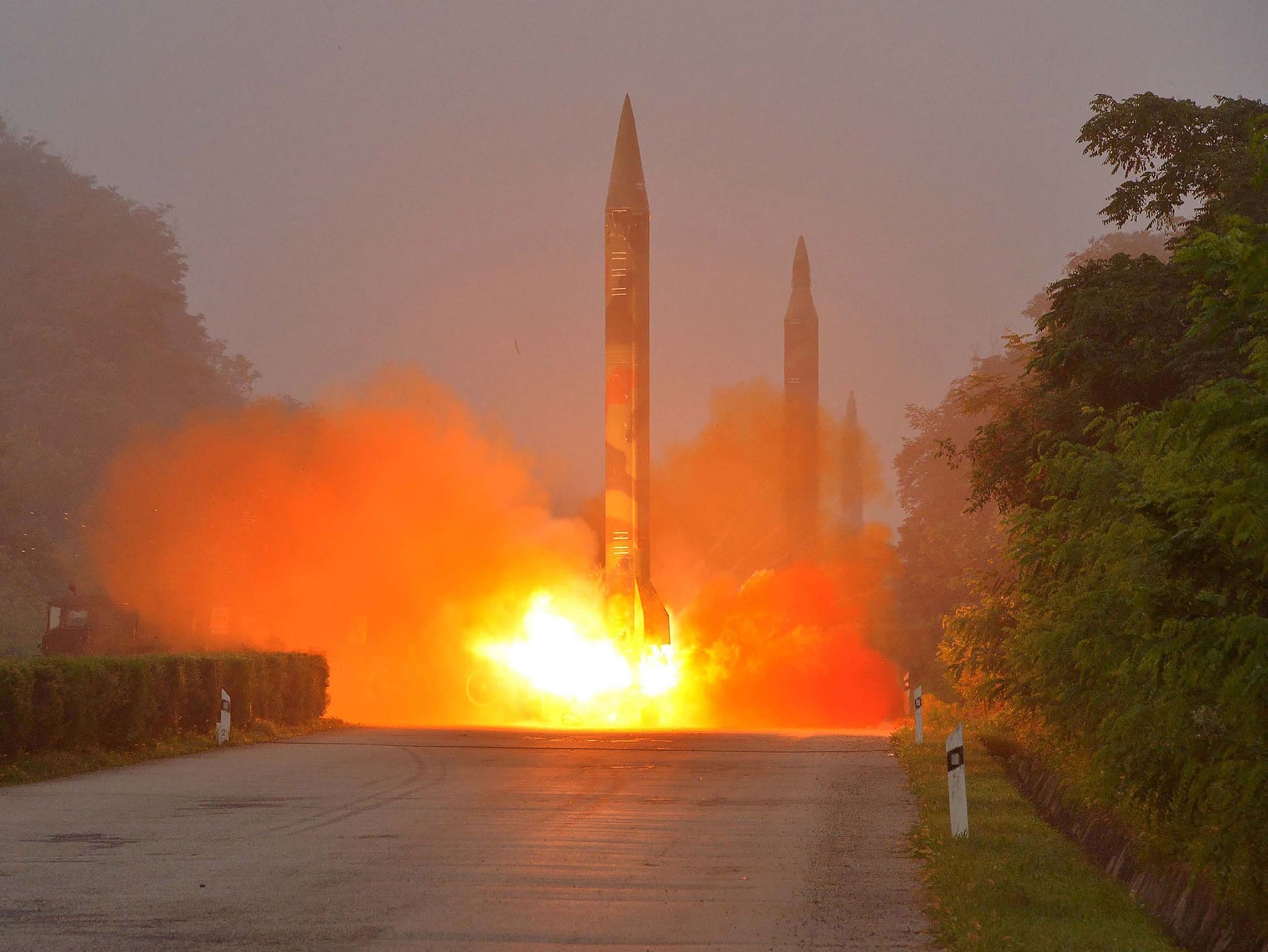North Korea 'fires two long-range missiles towards Japan'
Japan's Defence Ministry said the missile landed inside Japan's exclusive economic zone, the 200-nautical-mile offshore area where a nation has sovereign rights for exploring and exploiting resources

A medium-range ballistic missile fired by North Korea flew about 1,000km (620 miles) and landed near Japan's territorial waters, Seoul and Tokyo officials have said, one of the longest flights by a North Korean missile.
The US Strategic Command said North Korea fired two presumed Rodong missiles simultaneously today, not just one. The command's statement said initial indications reveal one of the missiles exploded immediately after launch, while the second was tracked over North Korea and into the Sea of Japan.
North Korea has recently claimed a series of technical breakthroughs over its goal of acquiring a long-range nuclear missile capable of reaching the continental US. South Korean defence officials say North Korea doesn't yet have such a weapon, but some civilian experts believe the North has the technology to mount warheads on shorter-range Rodong and Scud missiles that can strike South Korea and Japan.
According to the South Korean and Japanese announcements, one suspected Rodong missile lifted off from the North's western Hwanghae province and flew across the country before falling in waters between the Korean Peninsula and Japan. Seoul's Joint Chiefs of Staff said in a statement that it “strongly condemns” the missile launch because it explicitly shows the North's intentions of being able to launch missile attacks on South Korea and neighboring countries.
Japan's Defence Ministry said the missile landed inside Japan's exclusive economic zone, the 200-nautical-mile offshore area where a nation has sovereign rights for exploring and exploiting resources. Japanese media reported it was the first North Korean missile that has splashed down in Japan's EEZ.
“It imposes a serious threat to Japan's security and it is unforgivable act of violence toward Japan's security,” Prime Minister Shinzo Abe said.
The US condemned the recent launches as violating UN Security Council resolutions that ban North Korea's use of ballistic missile technology.
“This provocation only serves to increase the international community's resolve to counter the DPRK's prohibited activities, including through implementing existing UN Security Council sanctions,” said Navy Commander Gary Ross, a Pentagon spokesman.
North Korea has previously fired Rodong and other missiles into the sea, but South Korean analysts say Wednesday's 1,000km flight was one of the longest for a North Korean test.
This provocation only serves to increase the international community's resolve to counter the DPRK's prohibited activities
Several other North Korean rockets have gone farther and even over Japan. But Pyongyang called them satellite launches while Washington, Seoul and Tokyo said they were disguised tests of missile technology. After several failures, the North put its first satellite into space aboard a long-range rocket in December 2012, and conducted another successful satellite launch in February.
In June, North Korea, after a string of failures, sent another type of mid-range missile known as Musudan more than 1,400km (870 miles) high. Analysts said the high-altitude flight meant North Korea had made progress in its push to be able to strike US forces throughout the region.
North Korea routinely conducts weapons tests, but the latest launch came after North Korea warned of unspecified “physical counter-actions” against a US plan to deploy an advanced missile defense system in South Korea by the end of next year.
On 19 July, North Korea fired three ballistic missiles into the sea, according to Seoul defense officials. The North's state media later confirmed that it fired ballistic rockets carrying trigger devices for nuclear warheads as part of simulated pre-emptive atomic attacks on South Korea.
Analyst Kim Dong-yub at Seoul's Institute for Far East Studies said the latest Rodong launch appeared to be aimed at showing an ability to attack US military bases in Japan, a major source of reinforcements for US troops should a war break out on the Korean Peninsula.
Hyon Kwang Il, director of the scientific research department at the North's National Aerospace Development Administration, told the Associated Press last week that Pyongyang's military had mastered “the main and core techniques in long-range ballistic missile technology, including the starter engine technology, how to separate the different stages, guidance control techniques and re-entry and it's all ready to be operational.”
North Korea is known to have an arsenal of estimated 300 Rodong missiles whose maximum range is 1,300 kilometers (800 miles). A Rodong fired in March flew about 800 kilometers (500 miles) while two other Rodongs launched in 2014 flew about 650 kilometers (400 miles).
In pictures: North Korea hydrogen bomb test
Show all 15North Korea is expected to carry out more weapons launches in coming weeks to protest annual US-South Korean military drills that begin later this month. North Korea describes the drills as an invasion rehearsal.
The Korean Peninsula remains in a technical state of war because the 1950-53 Korean War ended with an armistice, not a peace treaty. About 28,500 US troops are stationed in South Korea and tens of thousands of more in Japan.
AP
Subscribe to Independent Premium to bookmark this article
Want to bookmark your favourite articles and stories to read or reference later? Start your Independent Premium subscription today.

Join our commenting forum
Join thought-provoking conversations, follow other Independent readers and see their replies